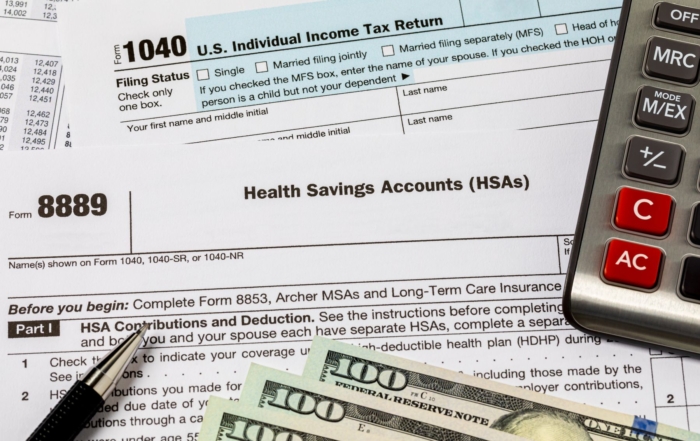Mental health challenges have tested many workers during the COVID-19 pandemic. And as the pandemic reaches the two-and-a-half-year mark, experts say employers need to make employees’ mental health as high of a priority as physical health.
“If you have a physical injury, you would go and get that taken care of,” said Jeannie Nigam, a NIOSH research psychologist. “If you twist your ankle and you can’t walk, you would go to the doctor. We need to approach mental health issues the same way. We need to recognize that it happens to everyone.”
A big step in that process: confronting the stigma that often accompanies mental health disorders.
Stigma looms large
Data reinforces a troubling situation: Many mental health disorders aren’t addressed by employers and go untreated by health professionals.
Of the more than 11,000 respondents to a survey commissioned by nonprofit association Mental Health America as part of its 2022 “Mind the Workplace” report, 66% disagreed with this statement: “My company’s leadership speaks openly about mental health in my workplace.”
Further, although 59% indicated their supervisor cares for their well-being, only 35% said they would feel comfortable requesting a mental-health accommodation from a manager or human resources. Additionally, the Substance Abuse and Mental Health Services Administration reports that almost 60% of adults with a mental illness didn’t receive services or treatment over the past year.
Make no mistake, stigma looms as a key culprit for this lack of comfort and communication. Stigma comes in many forms, including biases we apply to ourselves and those from public and media portrayals of mental illness, and this influences our perceptions. Whatever the case, the biggest impact that stigma has is it prevents people from seeking treatment and support.
So, how can employers help reduce stigma to get a dialogue going in their workplace?
Be approachable
Conversation at the beginning of a toolbox talk or pre-work meeting is likely to trend toward current events or work completed the previous day.
As supervisors transition to the topic at hand, Nigam recommends performing casual check-ins by asking workers whether they’ve recently experienced any job stress-related difficulties. Gather feedback and start a discussion, but don’t stop there. Use the conversation as a starting point so workers know you’re there to understand and provide support for issues occurring off the job as well, and relate your own struggles.
Hearing that others are experiencing mental strain – especially anyone who’s well respected – can help normalize the issue and open the door for more in-depth conversation.
“Seeing when a supervisor is human can make an individual feel like it’s acceptable to talk about what they’re feeling,” Nigam said. “And hearing a manager ask with genuine concern about how the worker is doing really helps them feel valued.”
Normalize respectful conversation and attitudes around mental health concerns because, as experts reiterate, they aren’t going away.
“We need to begin the dialogue before the cultural change can happen,” said Timothy Irving, deputy director of OSHA’s Directorate of Construction. “And we do need a cultural shift, again, not only on construction sites, but in workplaces in general.”
A study released in December offers hope: Researchers from Indiana University and Pennsylvania State University analyzed survey data from more than 4,100 adults included as part of the U.S. National Stigma Studies. They found that in 1996, 46% of the respondents said they preferred not to work closely with someone who has depression. In 2018, it decreased to 29%.
Navigating ‘the macho culture’
Ensuring workers feel they’re in a safe space to share experiences is critical. “It’s important to protect their privacy and to assure workers that talking about mental health will not negatively impact their employment or any advancement opportunities,” Nigam said.
Joseph “Chip” Hughes, deputy assistant secretary for pandemic and emergency response at OSHA, acknowledges one sizable communication challenge that’s of particular concern to men: the “macho culture” within construction and other industries. Disclosing experiences may affect perceptions of workers’ masculinity or negatively affect their confidence. In a 2021 survey of nearly 1,200 workers with various supervisory or executive roles in construction, only 17% of respondents believed their workers would comfortably and openly discuss mental health with a supervisor, while 18% believed workers would attempt to confide in co-workers.
Hughes said discussions between co-workers who’ve successfully managed mental health disorders and colleagues currently enduring struggles can be an effective tool. “You want to kick-start these conversations in the workplace before there’s a problem, and really, we know that it’s the workers in the workplace who know what the problem is,” Hughes said. “A lot of times it doesn’t come to management’s attention. So the more that we can educate the workforce about good mental health practices, and also the potential to intervene when necessary if you’re a bystander, the better.”
Resources
NARFA is proud to offer members access to our Employee Assistance Program which is such a critical benefit right now. NARFA members get confidential counseling from trained clinicians who can assist with issues ranging from family stress, financial issues, substance abuse, other mental health problems, and much more. Our Trust Representatives are ready and able to navigate our members to the right place. Also, contact us for more information about our association!
*Thanks to our friends at Safety and Health Magazine for some content in this piece.
Recent Posts
Poison Ivy, Oak & Sumac Safety Guide for Landscaping, Construction, and Outdoor Workers
Why Construction and Outdoor Workers Need to Know About Poison Plants The CDC reports that 80-90% of adults develop rashes from poison ivy exposure, and [...]
Multi-State Business Operations: Insurance and Compliance Strategies for Growing New Hampshire Auto Companies
Picture a successful New Hampshire automotive dealership that starts with a single location in Manchester. Over time, they expand their service territory, hire employees who [...]
Revolutionary HSA Changes in the 2025 Budget Bill: Your Complete Guide to Expanded Benefits
Introduction: A Game-Changer for Healthcare Financial Planning The 2025 federal budget reconciliation bill, recently passed by the House, introduces the most significant expansions to Health [...]




